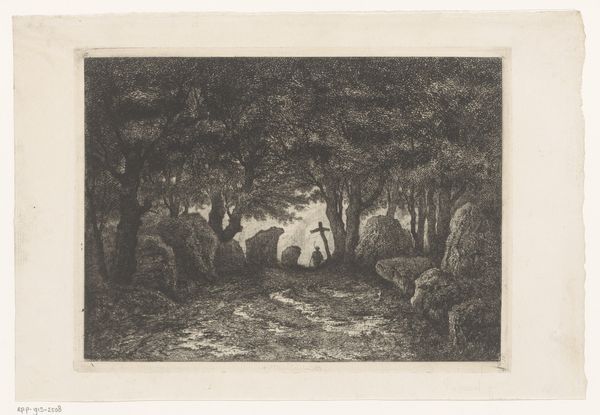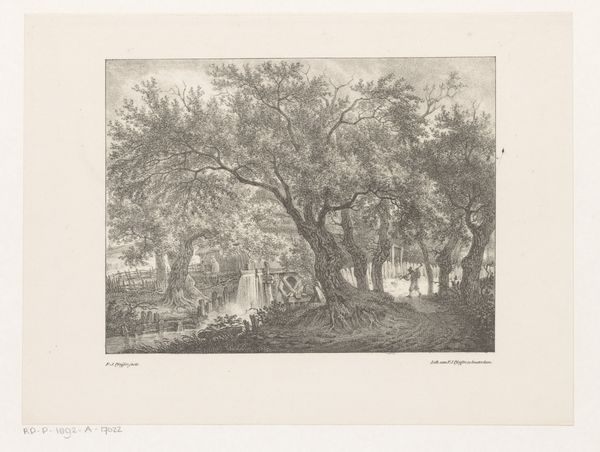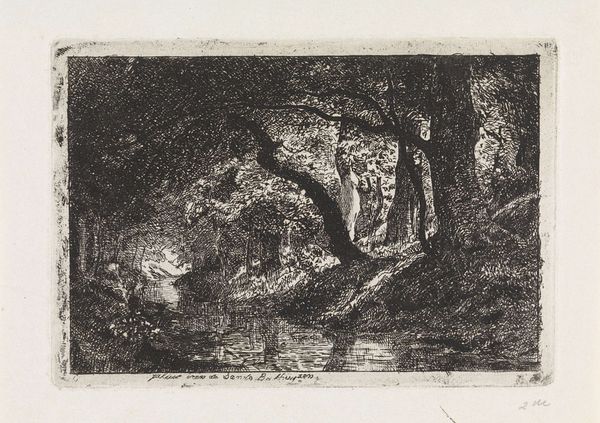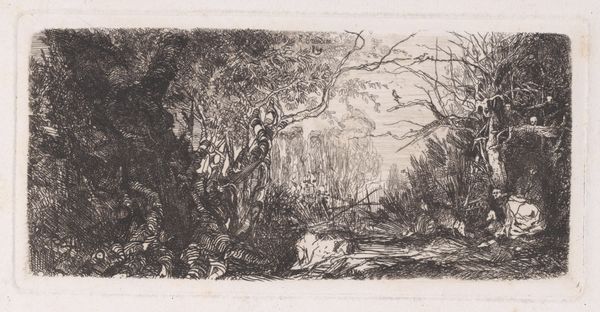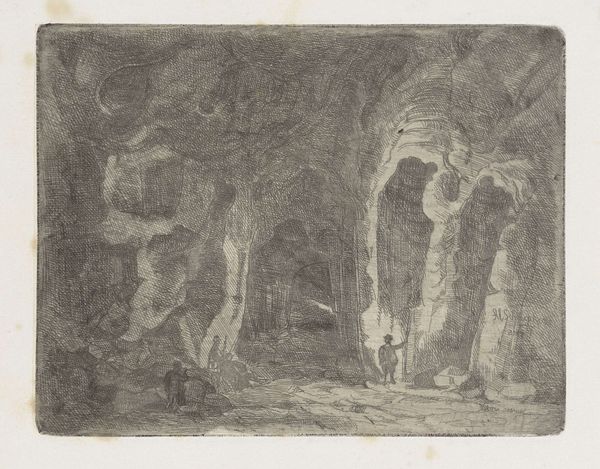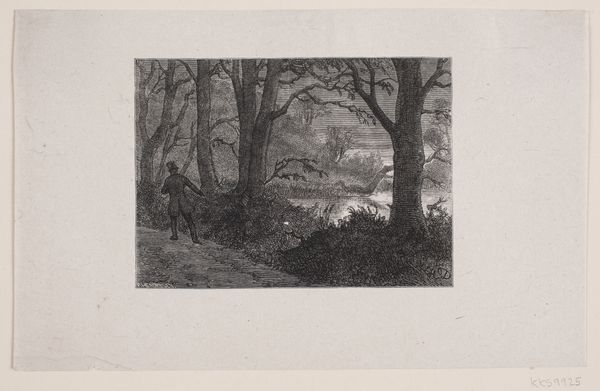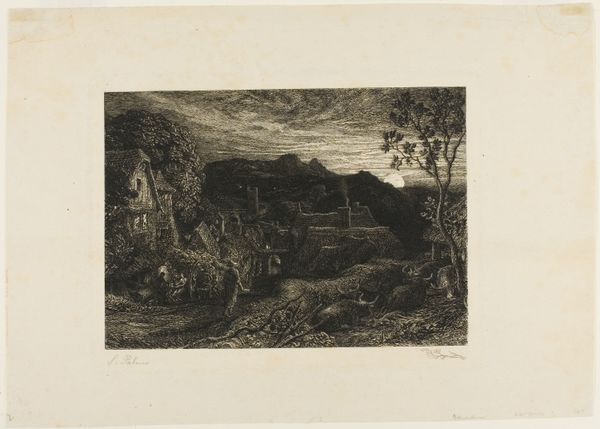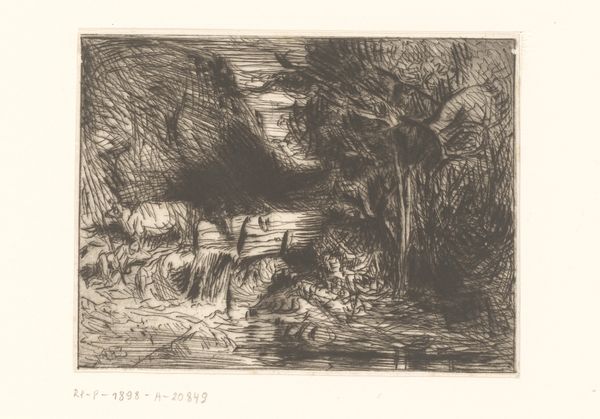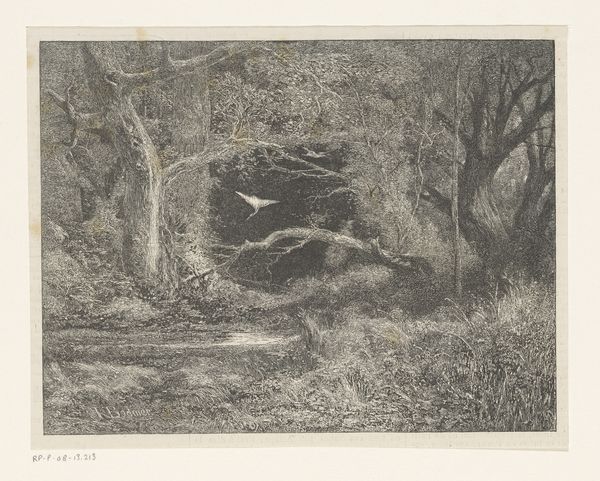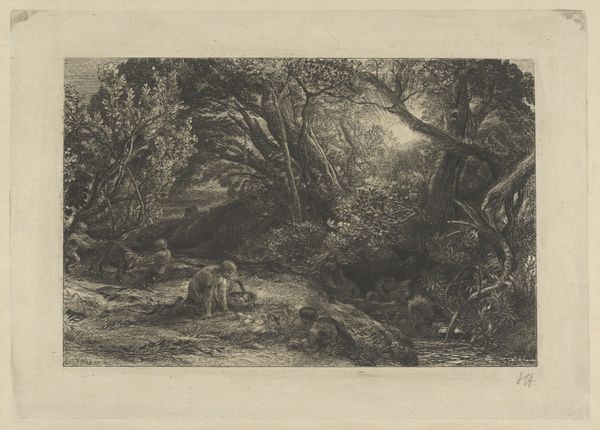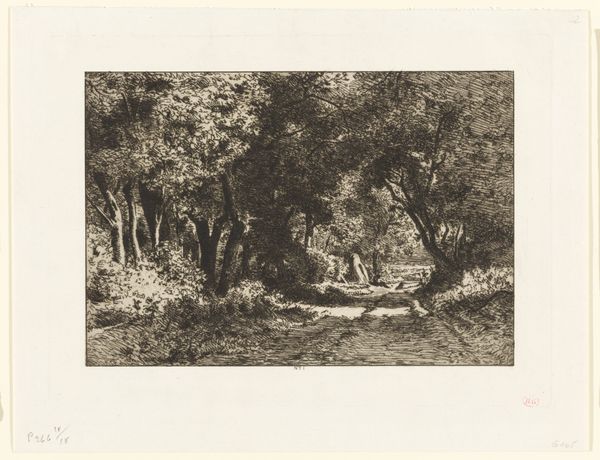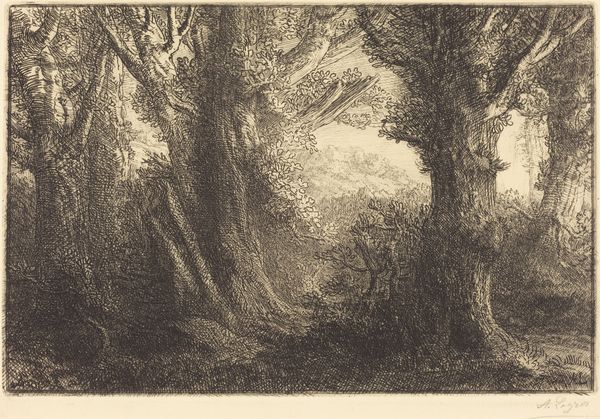
print, etching
#
aged paper
#
toned paper
# print
#
etching
#
old engraving style
#
landscape
#
forest
#
realism
Dimensions: height 171 mm, width 226 mm
Copyright: Rijks Museum: Open Domain
Editor: Here we have "Man bij een houten kruis aan de rand van een bos," or "Man at a wooden cross at the edge of a forest," an etching from sometime between 1839 and 1901 by Emile Puttaert. It’s such a stark, almost desolate scene. I’m struck by the level of detail achieved through the etching process. What's your take on this work? Curator: Looking at Puttaert’s print through a materialist lens, I'm drawn to consider the socioeconomic implications of printmaking during this period. Etchings like this one, given their reproducibility, allowed for broader distribution of imagery and ideas. How might this have impacted the perception of religious or landscape imagery amongst different social classes? Editor: That’s interesting. I hadn't really thought about the social reach facilitated by the medium itself. Were etchings considered more "accessible" art, then? Curator: Precisely. Unlike unique paintings commissioned by the wealthy, prints made art accessible, influencing visual culture and democratizing imagery. Furthermore, analyzing the labor involved - the artist's craft, the paper production, distribution – invites a discussion about the means of artistic production in that era. Editor: The "old engraving style" tag made me think about this; you’re so right! Considering the repetitive work involved in creating the plate makes the final artwork even more impactful. The aged paper adds to this story of labor and accessibility, doesn't it? Curator: Absolutely. The materials themselves – the paper, the ink – carry a history of their own production and consumption, contributing to the artwork’s overall meaning and its place in the broader culture. What do you think the use of realism says about the purpose of this print? Editor: Perhaps it's reflecting a desire to depict life as it was actually experienced, not idealized. To engage directly with the material reality of both faith and landscape. I never really considered the materials of an artwork as telling their own story like that! Curator: It transforms our understanding of the artwork. Examining its production allows us to delve deeper into its historical context.
Comments
No comments
Be the first to comment and join the conversation on the ultimate creative platform.
